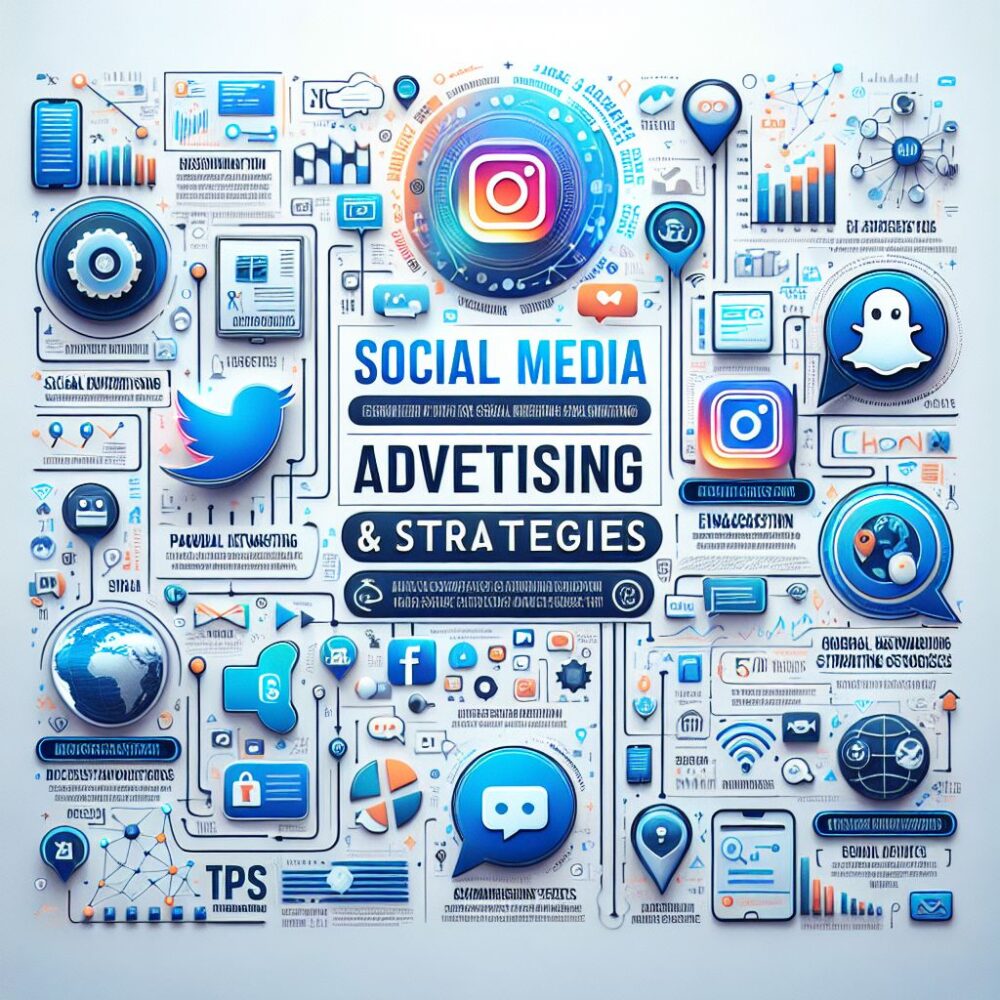Let’s dive straight into the heart of the matter. You want more eyes on your website, right? More traffic often means more opportunities, whether that’s sales, sign-ups, or simply spreading your message. Here’s how you can start making that happen.
Key Takeaways
- Optimizing your site with relevant keywords can lead to higher search engine rankings and more visitors.
- High-quality, valuable content tailored to your audience can significantly increase engagement and traffic.
- SEO isn’t just jargon; it’s a crucial tool for making your website more visible and accessible to potential visitors.
- Social media platforms are your allies in attracting a broader audience and fostering a sense of community around your brand.
- Using analytics to track and refine your traffic strategies is essential for long-term growth and success online.
Unlock Your Website’s Potential
Now, let’s get your website the attention it deserves. Your online space is your digital storefront, and just like any store, foot traffic is crucial. But instead of people simply passing by, you need strategies that actively draw them in.
Understanding Web Traffic Basics
Web traffic is all about the number of visitors your site gets. But it’s not just a numbers game; it’s about getting the right kind of visitors – those genuinely interested in what you have to offer. Think of it like a party; you want guests who’ll enjoy the atmosphere, not just anyone who’ll drop by for a free snack.
Why More Visitors Means Better Business Growth
More visitors mean more potential customers. It’s as simple as that. Each new visitor is a chance for a new sale or a new subscriber – someone who could become a lifelong fan of your brand. But how do you get them to stop by? Keep reading, because I’m about to tell you.
Crafting Content That Captivates
First things first: content is king. But not just any content – it’s got to be good. Really good. The kind of content that answers questions, solves problems, and leaves readers wanting more.
Identifying Your Audience
Before you start churning out blog posts and videos, take a step back. Who are you trying to reach? Understanding your audience is like having a roadmap; it’ll guide you to create content that resonates and engages.
Creating content without knowing your audience is like shooting arrows in the dark. To hit the bullseye, you need to know who you’re aiming for. Is your audience tech-savvy millennials or busy parents looking for quick tips? Get to know them, and you’ll know how to grab their attention.
Creating Compelling Blog Posts
Now, let’s talk about blog posts. They’re not just walls of text; they’re opportunities to showcase your expertise, share valuable insights, and address your audience’s needs. But to do that, your posts need to be engaging, informative, and, most importantly, readable. For more on creating content that resonates with readers, check out these responsible strategies for maximizing profits through ethical internet marketing.
Think about the blog posts that have caught your eye. They probably had catchy titles, were easy to scan through, and offered something you could take away and use in your life. That’s the sweet spot you’re aiming for with your content.
Utilizing Multimedia to Enhance Engagement
But don’t stop at text. Images, videos, infographics – they all play a part in keeping your visitors hooked. Humans are visual creatures, so give them something to look at. A well-placed video or a colorful infographic can be the difference between a reader sticking around or bouncing off to somewhere else.
Leveraging SEO to Your Advantage
Search Engine Optimization, or SEO, might sound technical, but it’s basically about making your website more attractive to search engines like Google. Why does that matter? Because the easier it is for search engines to find and understand your site, the easier it is for potential visitors to find you.
Keyword Research for Maximum Visibility
Let’s break it down. Keywords are the terms and phrases that people type into search engines when they’re looking for something. By including these in your content, you’re signaling to search engines that your site has the answers people are seeking.
But how do you find the right keywords? It’s a mix of thinking like your audience and using tools designed to track what people are searching for. Once you’ve got a list of keywords, sprinkle them throughout your content – in the titles, headers, and body text – but keep it natural. Keyword stuffing is a big no-no.
On-Page Optimization Techniques
After you’ve peppered your content with keywords, it’s time to fine-tune your website’s pages. This means optimizing your meta descriptions, using alt text for images, and structuring your content with headers. Every little tweak helps search engines understand your content better, which can lead to a higher ranking.
But remember, while SEO is about pleasing search engines, your ultimate goal is to provide a great experience for your human visitors. So, make sure your on-page optimizations make sense and add value for your readers.
Building Quality Backlinks
Think of backlinks as votes of confidence from other websites. When a reputable site links to yours, it’s like they’re saying, “Hey, check this out, it’s good stuff!” Search engines take notice of these endorsements and may boost your site’s credibility, and as a result, your ranking.
Gaining backlinks involves creating standout content that others want to share or being proactive by reaching out to other site owners to collaborate. It’s about building relationships, not just links.
Mastering Social Media Outreach
Social media isn’t just for cat videos and memes; it’s a powerhouse for driving traffic to your website. But to do it right, you need to be active, engaging, and strategic about the content you share.
Choosing the Right Platforms for Your Brand
Not all social media platforms are created equal, especially when it comes to your target audience. You’ve got to pick the ones where your potential visitors hang out. For example, if your brand is visually driven, Instagram might be the place to be. If you’re all about professional networking, then LinkedIn is your playground.
Creating Shareable Social Content
Once you’re on the right platforms, it’s all about creating content that’s so good, people can’t help but share it. This could be anything from a thought-provoking article to a funny gif that’s on-brand. When your content gets shared, it’s like a ripple effect – it reaches wider audiences, who might just click through to your website.
Engaging with your followers is not just polite; it’s strategic. When you interact with your audience, you’re building a relationship. Answer questions, join in on conversations, and be present. People are more likely to visit your website if they feel a connection to you and your brand.
Using Advertising to Boost Traffic
While organic growth is great, sometimes you need a little push. That’s where advertising comes in. It can give you a quick influx of traffic and help you reach a wider audience fast. But be smart about it; make sure you’re targeting the right people to get the most bang for your buck.
Understanding Pay-Per-Click Advertising
Pay-Per-Click (PPC) advertising is like a tap you can turn on to get instant traffic. You create ads, and you pay a fee each time someone clicks on them. The beauty of PPC is that you can target your ads very specifically – by demographics, interests, and even behaviors.
Platforms like Google AdWords and Facebook Ads are popular choices for PPC. They offer sophisticated targeting options and a wide reach. But remember, the key is to convert that traffic into customers, not just get clicks.
Creating Effective Ad Campaigns on Social Media
When it comes to social media ads, customization is your friend. Tailor your ads to reflect the interests and needs of your target audience. Use eye-catching visuals and compelling copy to stand out in a crowded feed. And always, always include a clear call to action that directs people to your website.
Growing Through Email Marketing
Email marketing is like a secret weapon. It’s personal, direct, and incredibly effective at driving traffic – if done right. The first step is to build a list of subscribers who are interested in what you have to say.
Building a Subscriber List
Start by offering something valuable in exchange for an email address. It could be a free ebook, a discount code, or access to exclusive content. Make it irresistible, and make sure your sign-up process is simple and straightforward.
Designing Newsletters That Drive Traffic
Now that you have subscribers, it’s time to send them newsletters that they’ll actually want to read. Provide content that’s relevant, useful, and engaging. Include links back to your website, but don’t make your newsletters just a series of links – tell a story, offer insights, and add value.
Enhancing User Experience
A great user experience keeps visitors coming back for more. It’s about making sure your website is easy to use, fast, and accessible. When visitors enjoy their time on your site, they’re more likely to stick around, explore, and even recommend it to others.
Improving Website Load Time
Speed matters. A slow website can drive visitors away faster than you can say “404 error”. Optimize your images, streamline your code, and choose a reliable hosting provider. Every second counts when it comes to keeping visitors engaged.
Ensuring Mobile-Friendliness
With more people browsing on their phones than ever before, your website absolutely must be mobile-friendly. If it’s not, you’re not just missing out on traffic; you’re actively turning it away. Test your site on different devices, and make adjustments as needed to ensure a smooth mobile experience.
Engaging with Influencers
Collaboration is key in today’s interconnected world. Teaming up with influencers can open doors to new audiences and inject a dose of credibility and excitement around your brand. It’s about finding those individuals who resonate with your potential customers and can amplify your message.
Identifying the Right Influencers for Your Brand
Finding the right influencer starts with understanding your brand’s values and goals. Look for influencers who align with your message and have an engaged audience that matches your target demographic. It’s not just about the number of followers; it’s about the quality of their engagement.
Once you’ve identified potential influencers, reach out with a personalized proposal. Show them why a partnership would be beneficial for both parties. Remember, influencers receive numerous pitches, so make yours stand out by being genuine and offering real value.
Forming Partnerships for Mutual Growth
When you’ve secured an influencer partnership, it’s all about collaboration. Work together to create content that’s authentic to their style but also highlights your brand. This synergy can lead to a campaign that’s more effective than anything you could have done alone.
Utilizing Analytics for Strategy Refinement
Analytics are your compass in the vast sea of the internet. They provide insights into who’s visiting your site, how they’re getting there, and what they’re doing once they arrive. By understanding these metrics, you can make informed decisions to improve your strategies and increase traffic.
Tracking Visitor Data to Inform Decisions
Most website platforms come with built-in analytics, or you can use tools like Google Analytics to get a deeper dive into your data. Regularly check your analytics to see which pages are popular, where your traffic is coming from, and what content is resonating with your audience.
By analyzing visitor behavior, you can identify successful strategies and areas for improvement. For instance, if you notice a high bounce rate on a particular page, you may need to enhance the content or improve the page’s load time.
- Monitor traffic sources to pinpoint where your visitors are coming from.
- Track engagement metrics like time on site and pages per session to understand user behavior.
- Analyze conversion rates to see which content is driving the desired actions.
Use this data to refine your content strategy, improve user experience, and optimize your marketing efforts for better results.
Adjusting Strategies Based on Performance Metrics
Your website’s performance metrics are a treasure trove of information. If you’re not meeting your traffic goals, it’s time to pivot. Use the insights from your analytics to adjust your content, SEO, and marketing strategies. Test different approaches and measure the results to find what works best for your audience.
Keeping Up with Trends and Updates
The digital world is ever-evolving, and staying current is crucial for maintaining and growing web traffic. New platforms, algorithms, and user preferences can all impact your online presence.
Staying Ahead in the Ever-Changing Digital Landscape
To stay ahead, keep an eye on industry news, subscribe to marketing blogs, and participate in online forums. By staying informed, you can anticipate changes and adapt your strategies accordingly.
Besides that, pay attention to the broader cultural and social trends that affect online behavior. What’s going viral? What’s fading into obscurity? Understanding the zeitgeist can help you tap into topics that are likely to attract attention and engagement.
Leveraging Trending Topics for Traffic
Jumping on trending topics can be a powerful way to increase traffic. But it’s important to do so in a way that’s relevant to your brand and valuable to your audience. Use tools like Google Trends or social media hashtags to identify what’s hot, and then create content that puts your unique spin on the conversation.
Frequently Asked Questions (FAQ)
As we wrap up, let’s address some common questions you might have about increasing web traffic.
How Long Does It Take to See Results from These Strategies?
Patience is key. While some tactics like PPC advertising can yield immediate traffic, SEO and content marketing often take time to build momentum. Generally, you might start seeing results within three to six months, but it can vary depending on numerous factors, including the competitiveness of your industry and the quality of your execution.
Most importantly, consistency is critical. Keep refining your strategies and stay committed to providing value, and you’ll see growth over time.
Can I Apply These Strategies on a Limited Budget?
Absolutely. Many of the strategies discussed, such as SEO, content creation, and engaging with your audience on social media, require more time than money. Focus on creating quality content and building genuine relationships with your audience and other brands. These efforts can lead to organic growth without a hefty price tag.
Is SEO Still Relevant in Increasing Web Traffic?
SEO is more relevant than ever. With the vast amount of content online, search engines are the primary way people discover new websites. By optimizing your site and content for search engines, you increase the chances of appearing in front of potential visitors who are looking for what you offer.
How Often Should I Update My Content to Maintain Web Traffic?
Regular updates signal to search engines that your site is active and relevant. Aim to post new content at least once a week, but quality trumps quantity. It’s better to post less frequently with high-quality content than to post subpar content more often.
“For every minute spent organizing, an hour is earned.” Apply this wisdom to your web traffic strategies, and you’ll not only save time but also create a website that attracts more visitors and thrives in the long run.




Leave a Reply